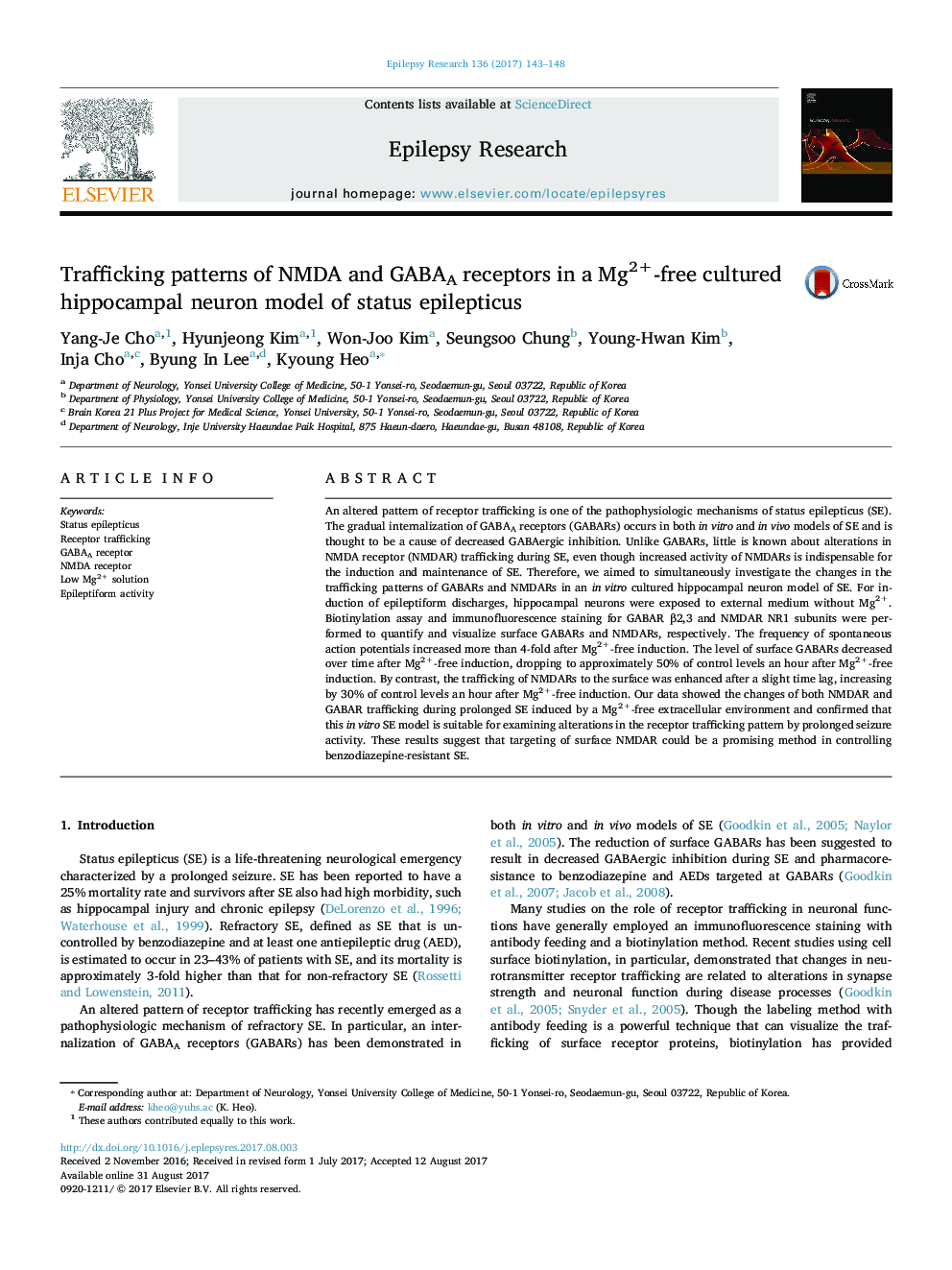| Article ID | Journal | Published Year | Pages | File Type |
|---|---|---|---|---|
| 5628711 | Epilepsy Research | 2017 | 6 Pages |
â¢Little is known about NMDA receptors trafficking during status epilepticus (SE).â¢SE by Mg2+-free condition causes GABAA receptor internalization in cultured neuron.â¢The membrane insertion of NMDA receptors increases during SE by Mg2+ deprivation.â¢In vitro Mg2+-free SE induces both trafficking of NMDA and GABAA receptors.â¢Blocking NMDA receptor trafficking would be a promising strategy for refractory SE.
An altered pattern of receptor trafficking is one of the pathophysiologic mechanisms of status epilepticus (SE). The gradual internalization of GABAA receptors (GABARs) occurs in both in vitro and in vivo models of SE and is thought to be a cause of decreased GABAergic inhibition. Unlike GABARs, little is known about alterations in NMDA receptor (NMDAR) trafficking during SE, even though increased activity of NMDARs is indispensable for the induction and maintenance of SE. Therefore, we aimed to simultaneously investigate the changes in the trafficking patterns of GABARs and NMDARs in an in vitro cultured hippocampal neuron model of SE. For induction of epileptiform discharges, hippocampal neurons were exposed to external medium without Mg2+. Biotinylation assay and immunofluorescence staining for GABAR β2,3 and NMDAR NR1 subunits were performed to quantify and visualize surface GABARs and NMDARs, respectively. The frequency of spontaneous action potentials increased more than 4-fold after Mg2+-free induction. The level of surface GABARs decreased over time after Mg2+-free induction, dropping to approximately 50% of control levels an hour after Mg2+-free induction. By contrast, the trafficking of NMDARs to the surface was enhanced after a slight time lag, increasing by 30% of control levels an hour after Mg2+-free induction. Our data showed the changes of both NMDAR and GABAR trafficking during prolonged SE induced by a Mg2+-free extracellular environment and confirmed that this in vitro SE model is suitable for examining alterations in the receptor trafficking pattern by prolonged seizure activity. These results suggest that targeting of surface NMDAR could be a promising method in controlling benzodiazepine-resistant SE.
